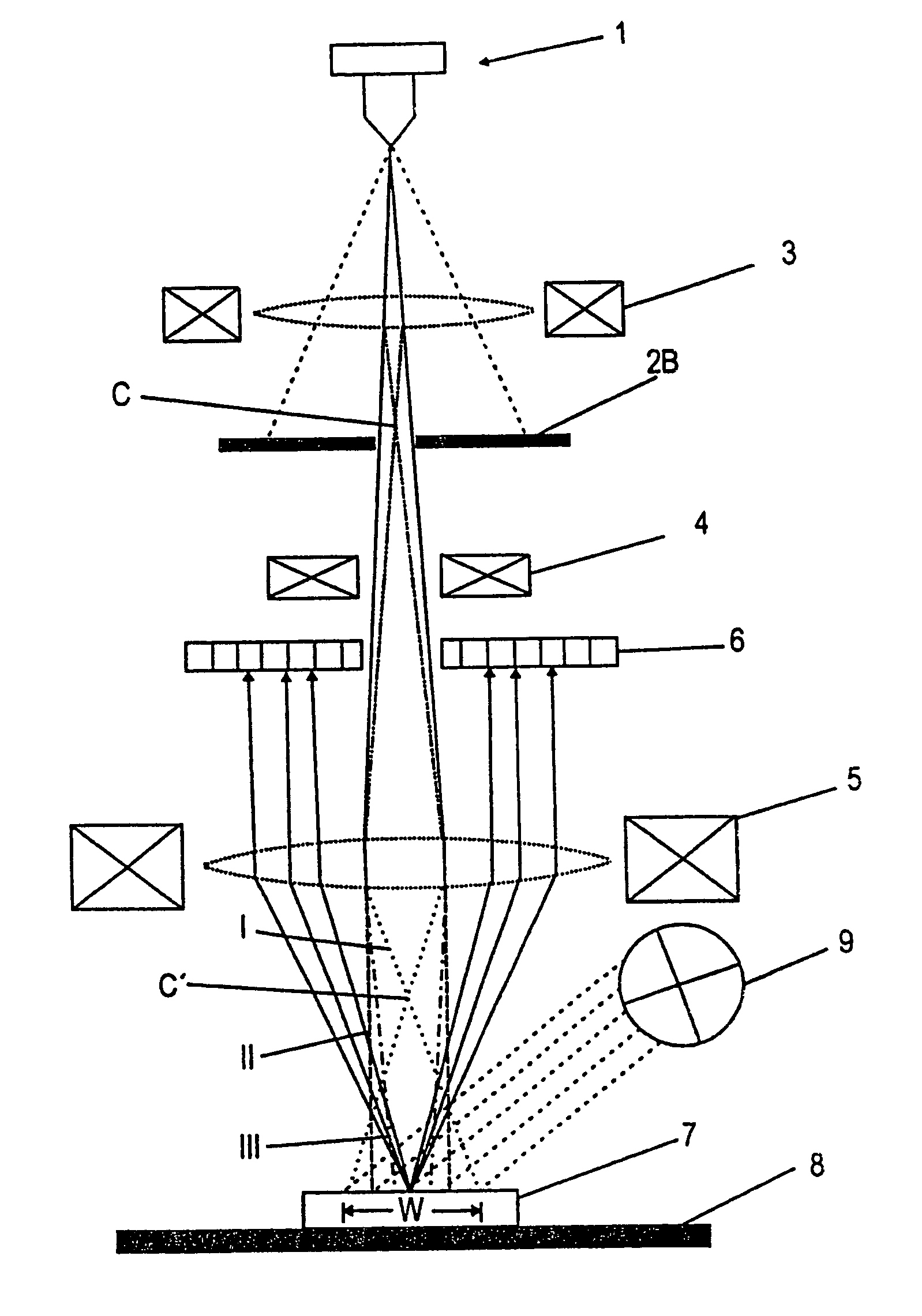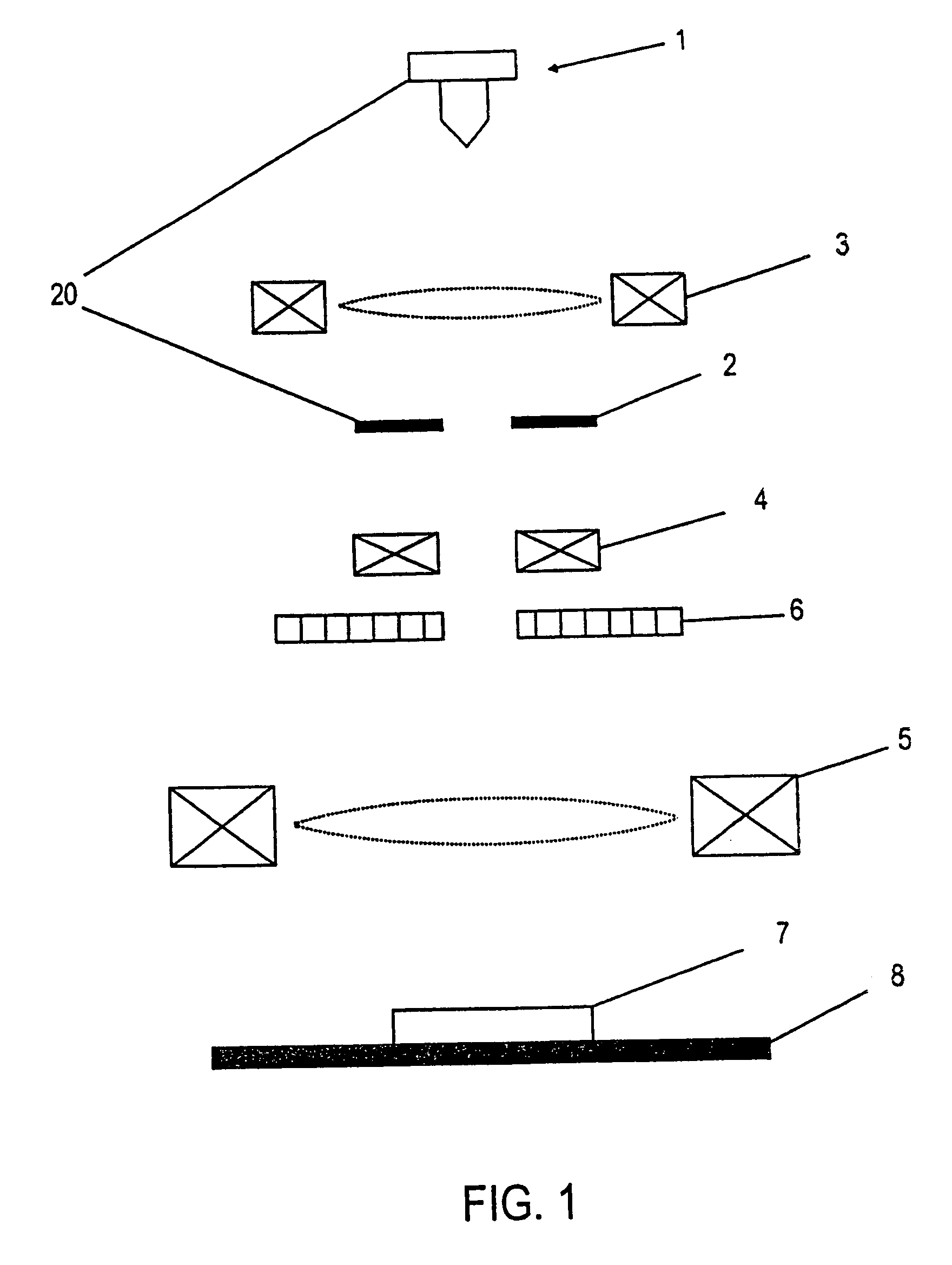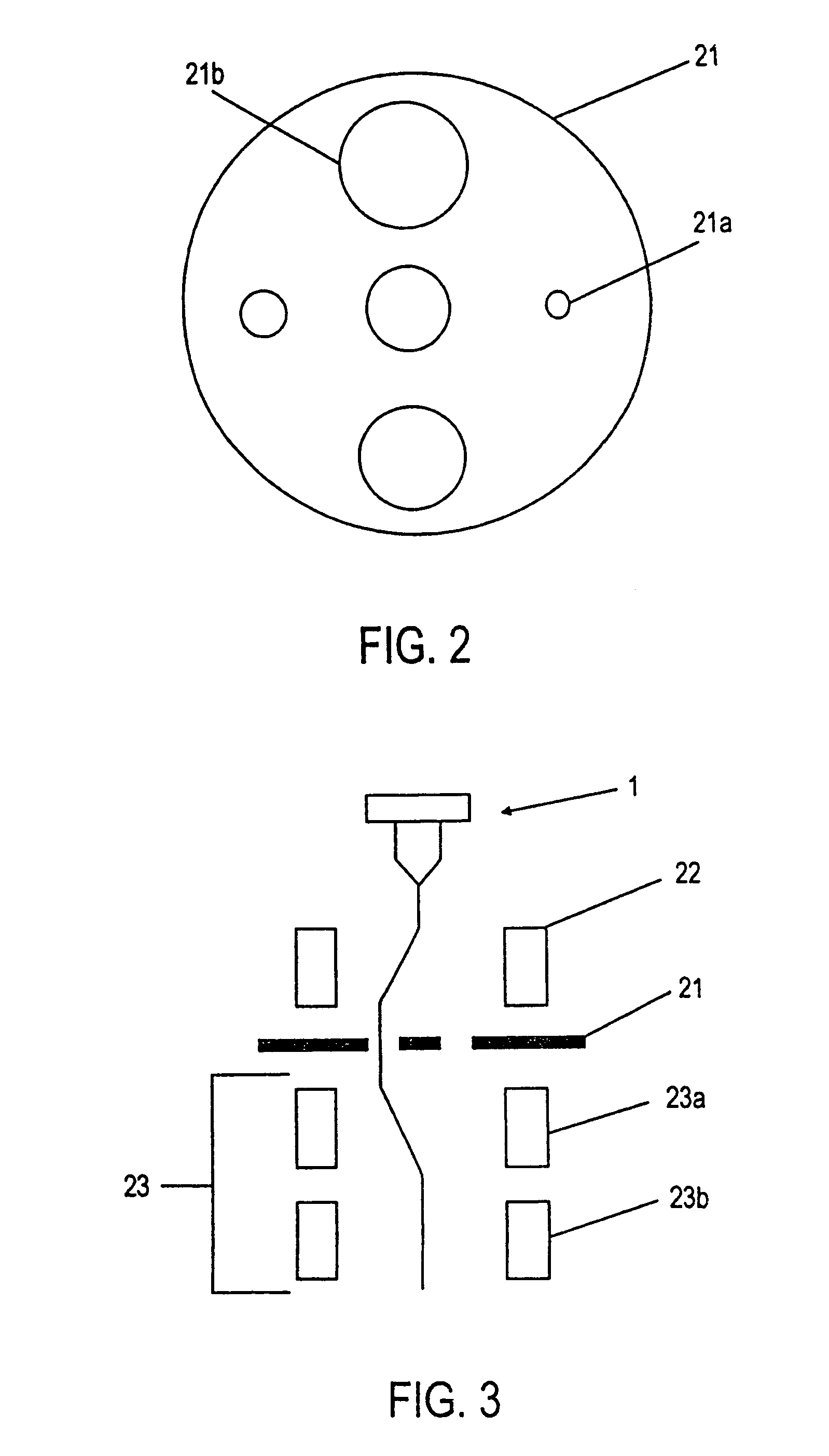Charged particle beam apparatus and method for operating the same
a particle beam and apparatus technology, applied in the field of electron microscopes, can solve the problems of slow raster scanning a surface with scanning electron microscopy, inability to establish electrical connection, and failure of whole chip,
- Summary
- Abstract
- Description
- Claims
- Application Information
AI Technical Summary
Benefits of technology
Problems solved by technology
Method used
Image
Examples
Embodiment Construction
[0046]It is to be understood within the context of the embodiments of the present invention that a charged particle beam is preferably an electron beam. However, this should not be understood as limiting the scope of the present invention since also other charged particles like, e.g. protons or ions, can be used in an apparatus or method according to the present invention.
[0047]FIG. 1 shows an electron beam apparatus according to a first embodiment of the present invention. This apparatus comprises a electron source 1, which produces a primary beam of electrons during operation. Typical electron sources are filaments, e.g. made of tungsten, but can also be formed by micro emitter tips or arrays of those.
[0048]In some embodiments according to the present invention, an aperture means 2 is provided which is adapted to switch between two different modes of collimation, a serial imaging mode (SEM mode) and a parallel imaging mode (SEEM mode). In the specific embodiment shown in FIG. 1, t...
PUM
 Login to View More
Login to View More Abstract
Description
Claims
Application Information
 Login to View More
Login to View More - R&D
- Intellectual Property
- Life Sciences
- Materials
- Tech Scout
- Unparalleled Data Quality
- Higher Quality Content
- 60% Fewer Hallucinations
Browse by: Latest US Patents, China's latest patents, Technical Efficacy Thesaurus, Application Domain, Technology Topic, Popular Technical Reports.
© 2025 PatSnap. All rights reserved.Legal|Privacy policy|Modern Slavery Act Transparency Statement|Sitemap|About US| Contact US: help@patsnap.com



